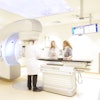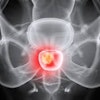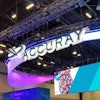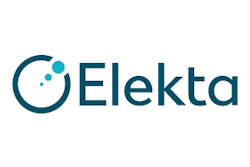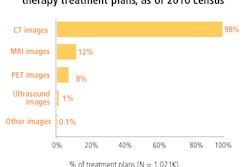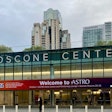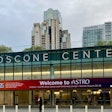Results of a recent survey by the American Society of Radiologic Technologists (ASRT) reveal that nearly 70% of respondents believe that the number of radiation therapists at their facility is appropriate for the number of linear accelerators being used and the number of patients being treated.
The Radiation Therapy, Management and Dosimetry Workplace Survey, performed with support from Varian Medical Systems, provides a comprehensive scan of the radiation therapy professional environment, including facility demographics and staffing levels, the impact of technology on the profession, staff clinical skills, and daily practice, according to ASRT.
Beginning in July 2010, 2,429 radiation therapists, 567 medical dosimetrists, and 359 facility managers participated in the online survey. The results were compiled in November.
The study showed that the average radiation therapy facility has 2.3 linear accelerators and treats 25.8 patients per day, per accelerator. On average, 2.32 therapists are scheduled per linear accelerator, with 1.24 medical dosimetrists scheduled per linear accelerator. In addition, more than 80% of facilities employ a medical physicist onsite.
More than 80% of staff and administrators believe that technology has "somewhat increased" or "greatly increased" the quality of patient care, even though the complexity of treatment has increased. Most radiation therapists and medical dosimetrists feel prepared when new technology is implemented, and 76.7% indicated that the equipment they work with is at least "somewhat intuitive" to "very intuitive." More than half of respondents indicated they are eager to learn new technology.
According to the survey, the top three services provided by radiation therapy facilities include intensity modulated radiation therapy (IMRT) at 96.1%, CT simulation at 93.7%, and conformal radiation therapy at 90.7%.
The results reveal that staff members believe they can perform the majority of procedures offered by their departments, and 80% of managers are satisfied with new graduates' skills in performing necessary job functions.
Slightly more than 32% of respondents graduated from a radiography plus one-year radiation therapy certificate program, 25.3 % graduated from an associate degree program, and 22.8% graduated from a bachelor's degree program. Nearly all of the surveyed radiation therapists indicated they were certified in radiation therapy by the American Registry of Radiologic Technologists (ARRT), while 84% of medical dosimetrists and 96% of managers hold the ARRT certification.
Complete survey results are available on the ASRT website.
Related Reading
ASRT finds low RT vacancy rate, August 12, 2010
ASRT, Siemens award scholarships, July 26, 2010
Elekta donates to ASRT scholarships, July 22, 2010
Varian, ASRT award scholarships, July 12, 2010
ASRT: RT salaries lag inflation, May 26, 2010
Copyright © 2010 AuntMinnie.com

